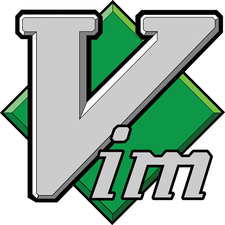What's new in Vim 8
Editor Upgrade

We explore the new goodies in the latest release of this classic text editor.
Forks in the free software world are usually a messy business. Egos get damaged, development effort dilutes, and it takes a long time before the two resulting projects end up working together. But, at the same time, forks are sometimes necessary to keep the bulk of contributors happy and keep the project moving along – look at what happened with XFree86 and X.org, for instance. The former was moving at a snail's pace and failing to attract new developers, but when the X.org fork arrived and most of the XFree86 team moved over, things got a lot better.
What has this got to do with Vim [1], the venerable command-line text editor with its notoriously steep learning curve? Well, Vim has had its own set of problems over the years. It's a very mature and reliable editor, but the code underpinning it was packed with cruft and suffering from bit-rot. This is inevitable given that Vim runs on pretty much every major operating system you can name – but the ancient codebase was impeding progress. New features were hard to implement, and new contributors were sometimes scared off.
So, a fork called Neovim came to life in 2014, with the goal of drastically refactoring Vim's code to provide better scripting support and improved performance and to generally clean up the cruft. For a while, it looked like Neovim could become the new Vim – just like X.org became the new XFree86. Bram Moolenaar, the lead developer of Vim, was skeptical about some of the changes in Neovim, but he didn't just close up shop and declare Neovim as the future (Figure 1). No, he and other Vim developers have been incentivized by Neovim to improve the original codebase – so, whatever happens with Neovim in the months and years to come, the fork has definitely benefitted the original project as well.
[...]
Buy this article as PDF
(incl. VAT)
Buy Linux Magazine
Subscribe to our Linux Newsletters
Find Linux and Open Source Jobs
Subscribe to our ADMIN Newsletters
Support Our Work
Linux Magazine content is made possible with support from readers like you. Please consider contributing when you’ve found an article to be beneficial.

News
-
Zorin OS 18 Hits over a Million Downloads
If you doubt Linux isn't gaining popularity, you only have to look at Zorin OS's download numbers.
-
TUXEDO Computers Scraps Snapdragon X1E-Based Laptop
Due to issues with a Snapdragon CPU, TUXEDO Computers has cancelled its plans to release a laptop based on this elite hardware.
-
Debian Unleashes Debian Libre Live
Debian Libre Live keeps your machine free of proprietary software.
-
Valve Announces Pending Release of Steam Machine
Shout it to the heavens: Steam Machine, powered by Linux, is set to arrive in 2026.
-
Happy Birthday, ADMIN Magazine!
ADMIN is celebrating its 15th anniversary with issue #90.
-
Another Linux Malware Discovered
Russian hackers use Hyper-V to hide malware within Linux virtual machines.
-
TUXEDO Computers Announces a New InfinityBook
TUXEDO Computers is at it again with a new InfinityBook that will meet your professional and gaming needs.
-
SUSE Dives into the Agentic AI Pool
SUSE becomes the first open source company to adopt agentic AI with SUSE Enterprise Linux 16.
-
Linux Now Runs Most Windows Games
The latest data shows that nearly 90 percent of Windows games can be played on Linux.
-
Fedora 43 Has Finally Landed
The Fedora Linux developers have announced their latest release, Fedora 43.

